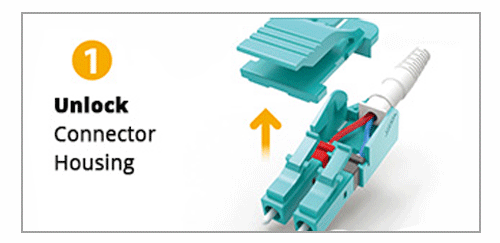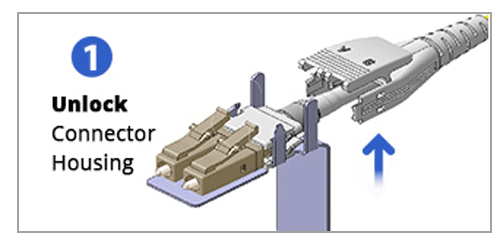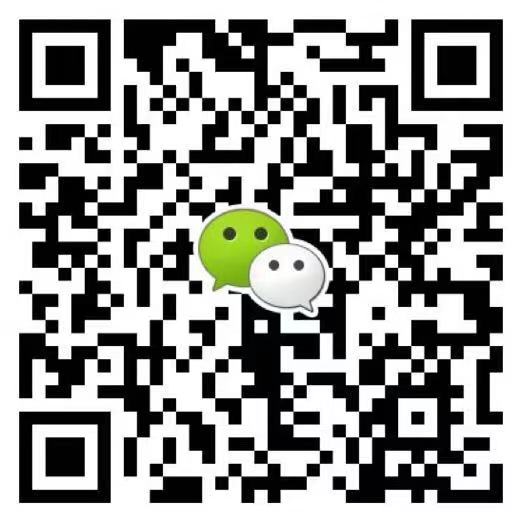Shenzhen Unifiber Technology Co.,Ltd
Add:2F,Block 2, The Fourth Industry Park, ShuiTian Community,ShiYan,BaoAn Area,ShenZhen,China.
Email:info@szunifiber.com
Tel:+86-755-29239581
Fax:+86-755-29239581
Copyright UNIFIBER | Data Center | FTTx Network Solutions 备案号
How Does LC Uniboot Patch Cord Reverse Polarity?
LC Uniboot patch cords are now used as the preferred option of fiber patch cords for data center high density connectivity. They feature a reverse polarity uniboot designed LC connector, eliminating the need for the dual zip cord and reducing overall cabling bulk by 50%. But do you know how does the LC uniboot patch cord achieve polarity reversal? You may find the answer in this post.
Brief Introduction to LC Uniboot Patch Cord
LC uniboot patch cords are designed for high density applications in data center environment. Generally, the LC uniboot patch cord is designed with a polarization method that can help users easily reverse the fiber polarity. In addition, the LC uniboot fiber patch cord can reduce cable management space comparing to standard patchcords as it places both simplex fibers into one jacket while still terminating into a duplex LC connector. Similar to the standard patch cord, single-mode and multimode versions are available in LC uniboot patch cord.
Basic Types of Design Principle
As we know, for traditional cabling systems using single fiber connectors, maintaining polarity requires that the “B” transmit signal connects to the “A” receive signal. But duplex patch cords used to complete serial duplex pair connections are available in two types, depending on which polarity technique is used—”A-to-B” patch cord for “straight-through” wiring and “A-to-A” patch cord for “crossover” wiring. Thus, polarity reversal is usually required during fiber optic cabling.
However, for traditional LC patch cord, polarity reversal is very inconvenient. Therefore, vendors developed the LC uniboot that is easier for polarity reversal, without having to re-terminate the connectors. Nowadays, throughout the market, two basic types of design principle are mainly used in LC uniboot patch cord for polarity reversal.
Type One: Switching the A and B positions of the patch cord

Type Two: Rotating connector 180 degree to exchange the position

Products in the Market
Based on the above two design principles, there are various of LC uniboot patch cord products in the market now. In type one, the early LC uniboot patch cord requires stop-ring and kevlar crimp sleeve for the best cable retention support. But now, switchable LC uniboot patch cords with more convenient design are launched to the market. Users can open the clip and switch the polarity easily without any tools during the whole process. Products based on type two design principles apply some separation and rotation on the connectors to achieve the polarity reversal, instead of A and B position exchange. According to different vendors, the rotating part may be in a different design, e.g. Flip the released section of the housing or separately turn the A and B connector 180 degrees in the corresponding direction.
Conclusion
At present, a variety of LC uniboot patch cords are on sale in the market. Though they are designed based on the above two principles, they have different features according to different vendors. Famous vendors such as Levtion, Panduit, Unifiber, SENKO, etc., can offer LC uniboot patch cords. Users can choose a reliable vendor and choose the type you preferred according to the actual requirement.




